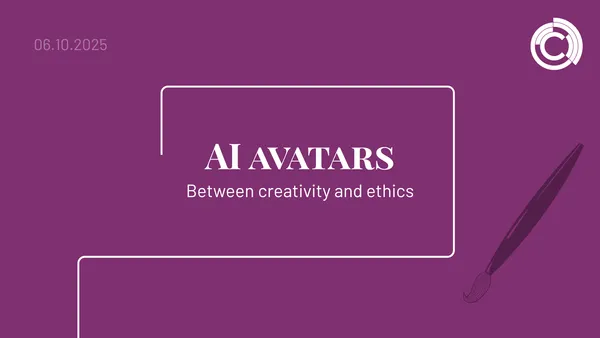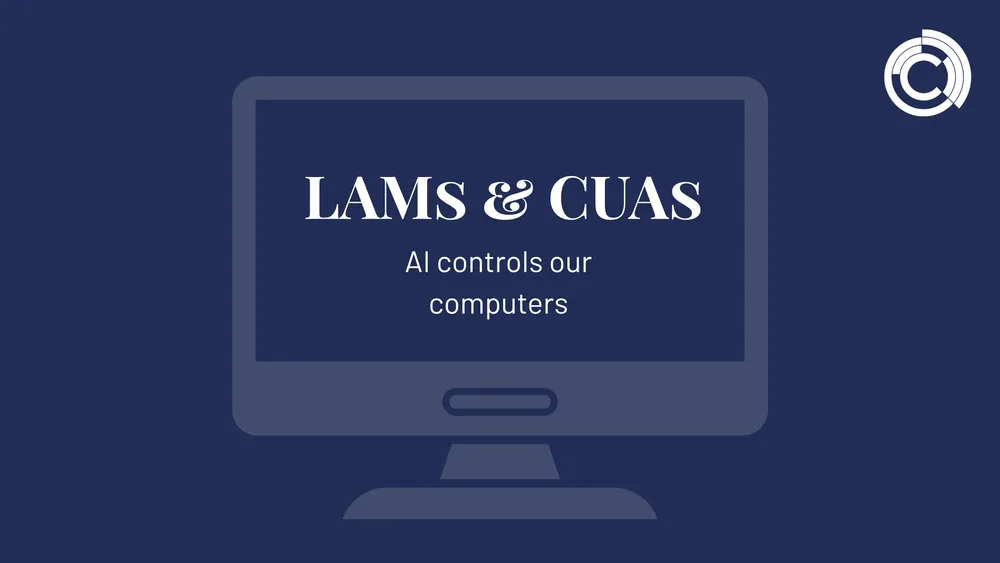
CCNet
Oct 6, 2025 • 3 min read

AI avatars – between creativity and ethics
Virtual humans, digital characters, or even AI avatars—in 2025, they will shape the way brands, companies, and even entire industries communicate. Driven by advances in image and speech technologies, AI avatars can hold realistic conversations, mimic emotions, and act as digital representatives. But the opportunities offered by this technology are accompanied by profound ethical questions.
What are AI avatars?
AI avatars are computer-generated, human-like representations that can interact with customers, employees, or the public in real time. They appear in videos, virtual meetings, or on websites – sometimes so realistic that the difference between them and real people is barely noticeable. This opens up new avenues for companies in marketing, customer service, and training.
New creative possibilities
AI avatars are a powerful tool for the creative industry. Brands can convey their messages through virtual characters that are available at any time, multilingual, and customizable. Companies use them to personalize customer experiences or present products in a more emotional way.
For example, instead of producing a traditional video, a company can deploy an avatar within hours to explain new products in different languages—at a fraction of the previous cost. Avatars are also increasingly being used in recruiting and training, for example as virtual trainers or moderators.
The downside: manipulation and trust
As fascinating as the technology is, it also raises significant questions. Authenticity and trust are key factors in any customer relationship. When avatars appear deceptively real, the boundaries between reality and artificial representation become blurred. Misuse – for example, in the form of “deepfakes” – is a real risk.
Ethical aspects must also be considered:
• Transparency: Must it always be apparent that an avatar is being used?
• Data protection: What information are avatars allowed to collect and evaluate about users?
• Credibility: How will customers react when they learn that their conversation partner is not “real”?
Between regulation and personal responsibility
In Europe, the AI Act also plays a role here. Initial guidelines call for clear labeling of artificial content. For companies, this means that anyone using AI avatars must comply with transparency rules and define clear guidelines for their use.
At the same time, the responsibility lies with management: AI avatars should not be seen merely as a cost-saving model, but must be integrated into communication strategically and responsibly. Otherwise, there is a risk to reputation if customers get the impression that they are being deceived.
Opportunities for management
Despite all the concerns, the potential is enormous:
• Scalability: Avatars are available around the clock and can be used worldwide.
• Cost savings: Content production becomes cheaper and faster.
• Innovation in customer contact: Virtual characters create new experiences.
Used correctly, AI avatars can strengthen brand image, increase customer loyalty, and even enable new business models.
Conclusion: Creativity yes – responsibility too
AI avatars are a fascinating example of how technology combines creativity and efficiency. But especially for managers, their use requires clear guidelines. Those who maintain transparency and observe ethical standards can use avatars as an innovative tool. Those who act uncritically, on the other hand, risk losing trust.
The message is clear: AI avatars are here to stay. The task now is to design them responsibly – so that they become a real added value for companies and society.
Further information can be found here: AI Trends 2025
FAQ about ai trends 2025
What are AI avatars?
Virtual, human-like characters that can interact in real time.
Where are they used?
In marketing, customer service, recruiting, and training.
What advantages do they offer?
Scalability, cost savings, and new creative possibilities.
What are the biggest risks?
Deception, deepfakes, data protection issues, and loss of trust.
What role does transparency play?
Companies must make it clear that these are avatars.
How does the AI Act influence their use?
It requires the labeling of artificial content and clear rules.


